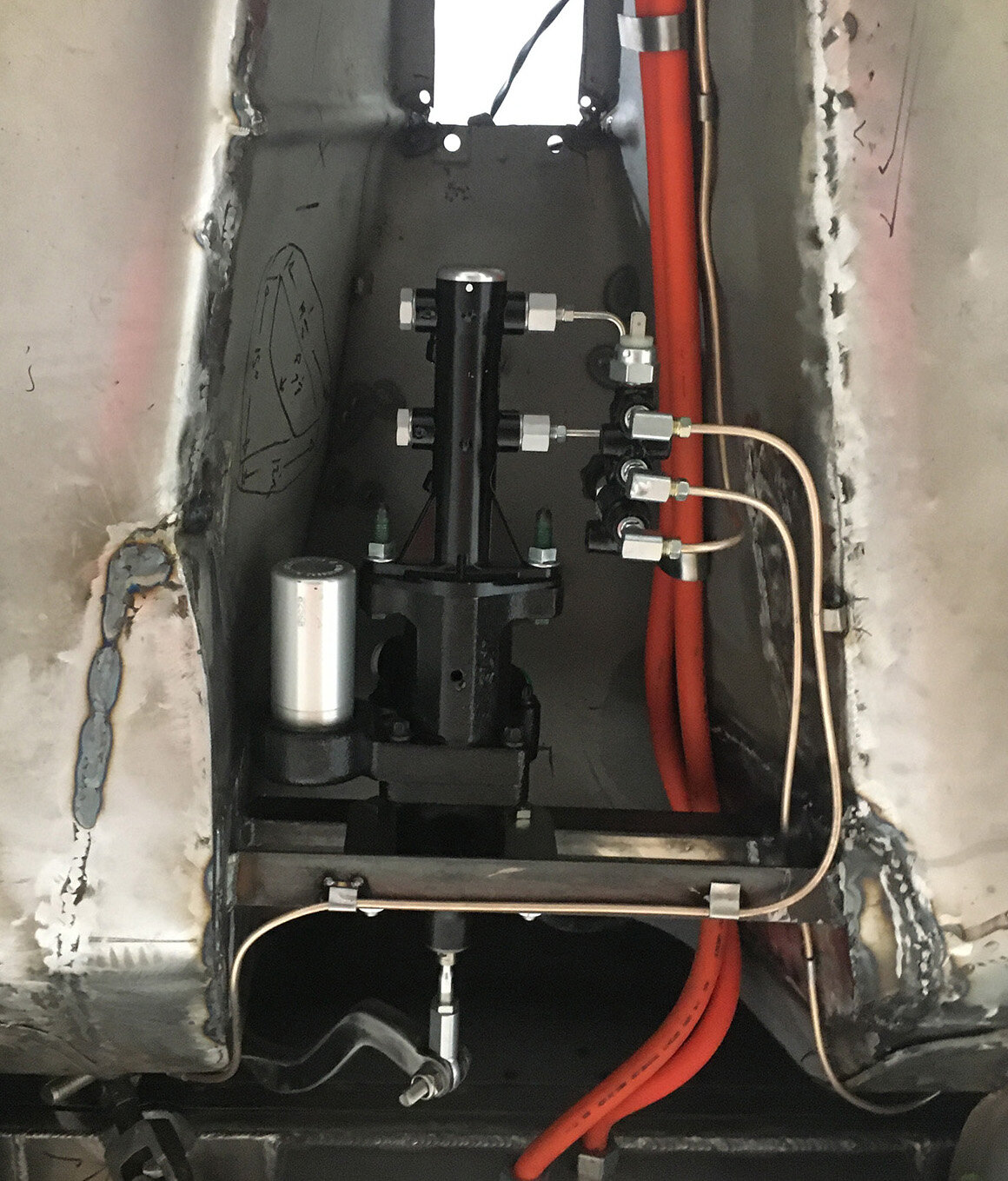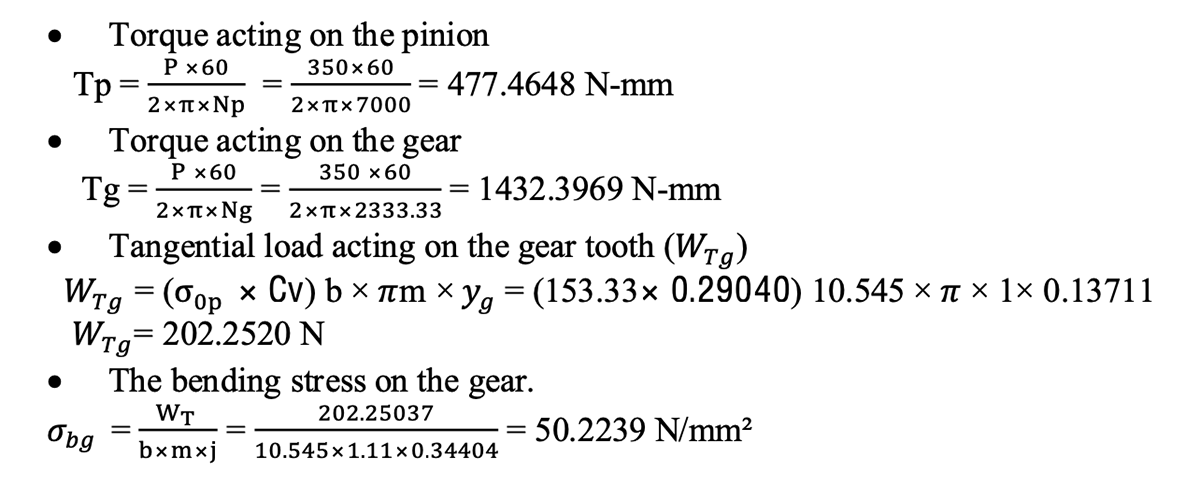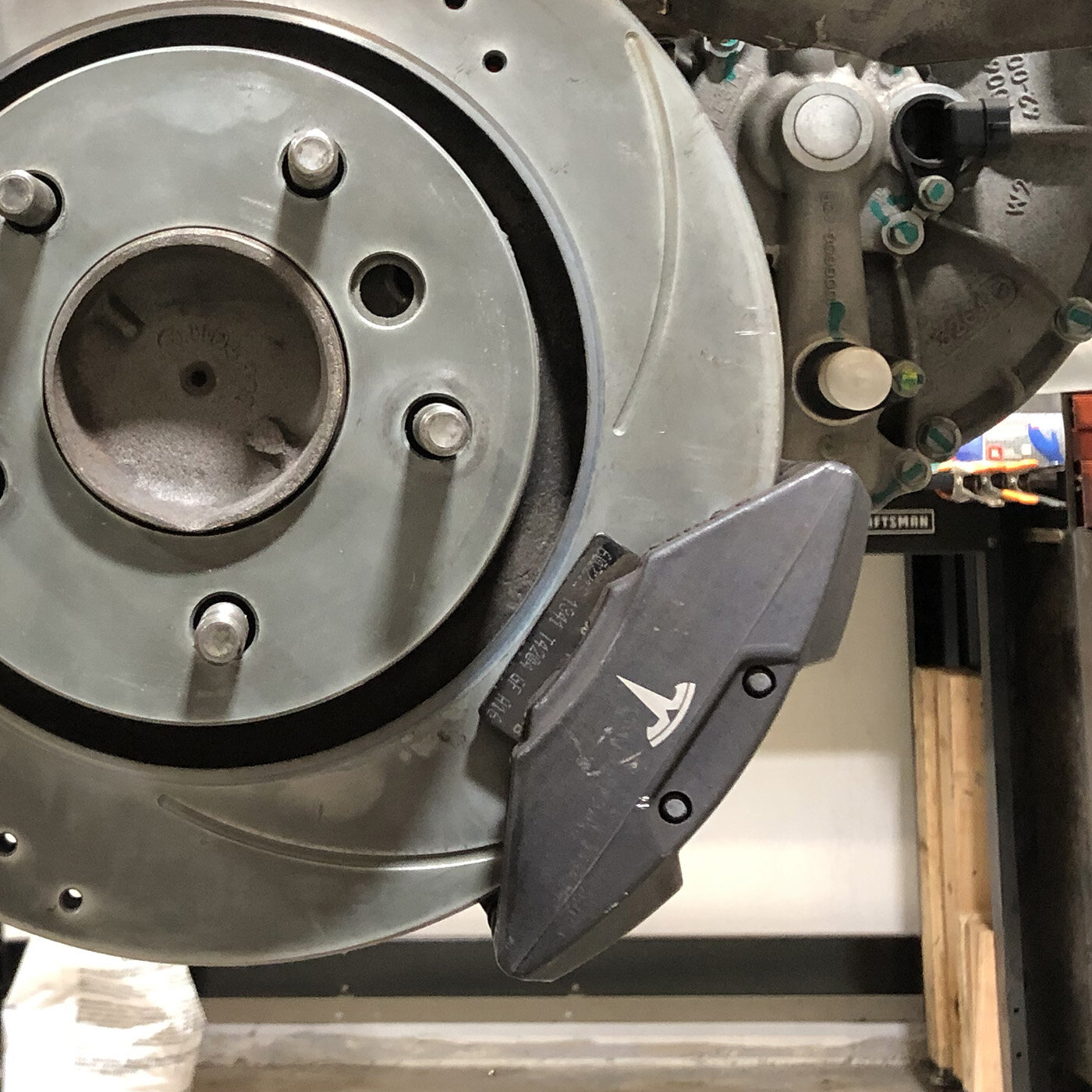That's the Brakes
In a recent post, we discussed how we turned the brake booster around into the transmission tunnel to make space for the battery box. But what about the rest of the brake setup? This is our last hurdle before we can drive the coupe.
I Like Big Brakes and I Cannot Lie
The brakes that BMW designed into this car were fantastic. Top of their class for the early 1970s. Our model had dual-piston calipers over vented rotors in the fronts, and disc brakes in the rear - racing pedigree to be sure. So why upgrade them? Let me take you back to 1988.
I grew up a water-cooled VW enthusiast. I built my share of Rabbits, GTIs and Cabriolets. I was an avid reader of VW&Porsche Magazine in those days. I remember reading an article preaching this concept: Before you increase your horsepower, increase your braking power. At 18 years old, I had little regard for increasing anything other than GO power. But the article stuck with me and I eventually began to appreciate brakes as much as I do acceleration. When I finally started driving 911s I realized just how intoxicating superior brakes can be (let alone their ability to help win a race).
Back to 2019. Based on the power we are putting into this car, I thought that we should increase the already great brakes on our car to spectacular brakes. A Wilwood setup seemed the logical choice, as they manufacturer a wide range of race-proven braking components which can be fit to nearly any car. A dealer here in California offers a Wilwood conversion kit for our BMW including rotors (discs), calipers and hoses, bundled with their own adaptor mounting plates and hub spacer rings. I leave that company unnamed because of all the trouble we had with their kit. Nothing bolted on without cutting, drilling, grinding or welding. But the kit did give me a decent starting point, so I give them that.
The calipers arrived looking very impressive, but I thought that we should add a bit of personality to them. So off to the powder coater they went.
They returned in dramatic orange. The front setup is looking good here. The rotors are over an inch larger than stock front and rear.
In the rear, Brett did some major mods to the trailing arms. Cutting a notch, then welding a custom bracket to mount the calipers. It was all worth it to match the angle of the fronts.
Inside the front fenders, things are looking clean. Wilwood stainless steel flexible hoses on all corners (We haven’t talked about our coilover suspension here yet).
Looking up into our transmission tunnel. Master cylinder, adjustable front-rear proportion valve, then all new brake lines to each corner.
When all was said and done we have serious stopping power with a touch of personality.
Parking Brakes
In most cars, the parking brake is optional. In my observation, I find that few people even set their parking brake unless they are parking on a hill. In a Tesla however, there is no engine or transmission to keep the car from rolling away. In fact, when you put a Tesla in Park you hear electric brake motors locking the wheels. There is no control for this, it is just how the car achieves Park.
I did not want to depend on the stock sub-par emergency brake to park our car. If someone else drives the car, they would put it in park and exit the car only to watch it roll away. We need to upgrade to a very robust and automatic parking brake to provide a true “Park”. Many luxury cars have been using electric parking brakes for years. Tesla uses a Brembo electric caliper. They are extremely simple in that you simply give them 12 volts for just a few moments, and an internal motor clamps the pads to your rear disc. Even when 12 volts is released, the brakes remain locked.
Note: I have no idea if this is the actual equation, but it looks impressive.
The motor turns a worm gear against a larger spur gear, which cannot turn the worm gear backwards. This means that until you apply the opposite 12 volts and turn the motor backwards, the worm gear will hold and brake force will be applied forever. This simple calculation shows exactly how it works:
Tyler built some nice mounting plates, which bolt to the original threaded BMW caliper holes.
The installed Brembo electric parking brake from the front.
The wiring runs through retainer brackets to protect them from pinching or rubbing anything dangerous.
We will control these units with a unit by Pantera Electronics. They have designed a few control boxes for hod rodders wanting to use the Tesla/Brembo calipers. It will engage automatically when we put the car in Park with the shifter. When we pull the car out of Park and into Reverse or Drive, the unit will automatically disengage. We’ve already filled in the handbrake lever making way for a bit of an armrest.
This is the last step before driving the car. Stay tuned!
Cheers,
Paul










